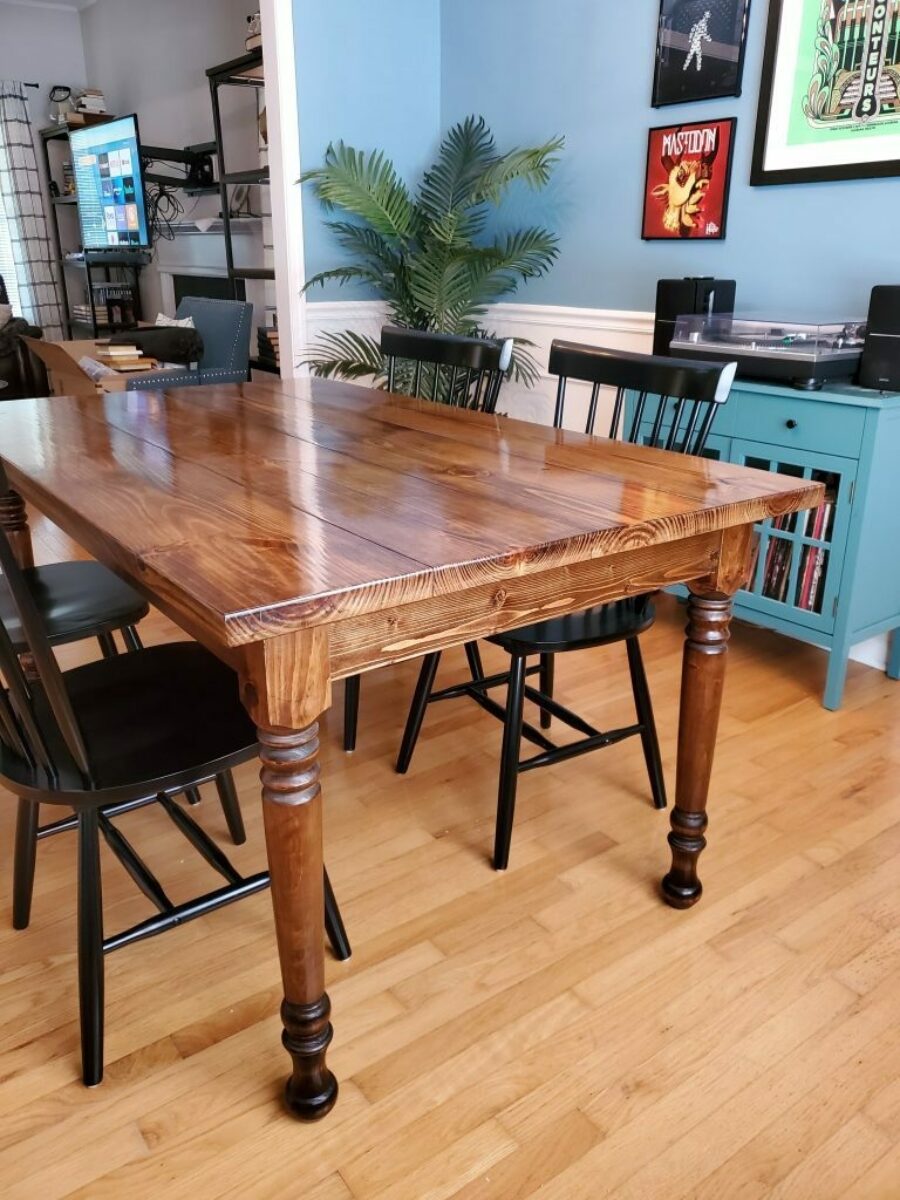Update Your Furniture with Fashionable Dining Room Table Legs
Update Your Furniture with Fashionable Dining Room Table Legs
Blog Article
Eating Table Legs: How to Select the Best Designs for Your Area
Choosing the appropriate dining table legs is important for both aesthetic and useful harmony in your eating room. Whether your room flaunts a smooth, contemporary ambiance or leans in the direction of a much more traditional ambiance, the style of the legs can considerably affect the total appearance. Conical legs exhibit modern style, while turned legs supply a nod to timeless beauty. Beyond style, the product-- be it warm wood or streamlined steel-- plays an essential duty in establishing the tone. Exactly how do you make sure these elements enhance your existing style while providing the required security? The response exists in a balanced approach.
Evaluating Your Dining Room Style
Just how do you identify the ideal dining table legs for your room? The response starts with a detailed analysis of your eating area style. A cohesive design guarantees that your table legs improve the total aesthetic rather than clash with existing elements.
Following, think about the existing furniture and decoration. The products, colors, and appearances within the room play an important function. A dining space with sleek, modern-day chairs and metal accents might benefit from easy, streamlined table legs. Conversely, a space filled with classic pieces and rich materials could ask for elaborate, sculpted legs.
Big, open dining areas can fit heavier, extra significant legs, whereas smaller areas call for more delicate, inconspicuous designs. By thoroughly reviewing these aspects, you can select dining table legs that harmoniously mix with your eating room's style.
Popular Leg Styles Discussed

One widespread style is the conical leg, renowned for its sleek, contemporary look. Next, the turned leg features detailed spindle-like layouts, typically located in traditional and farmhouse settings.
Cabriole legs, with their distinctive contours, are identified with French Provincial and Queen Anne furnishings. Their stylish, streaming lines bring a sense of class and historical charm (dining room table legs). For those favoring a robust and simple style, square legs offer strong support and a clean, geometric appearance, perfect for commercial or minimal areas
Lastly, hairpin legs provide a retro, mid-century contemporary ambiance. Made from steel, these legs are both light-weight and strong, including an one-of-a-kind aesthetic contrast to wood tabletops. Understanding these designs will certainly direct you in selecting table legs that improve your space's visual and performance.
Material Factors To Consider

Wood is a timeless choice, known for its warmth and adaptability. It can be found in numerous varieties such as oak, walnut, and maple, each offering distinct grain patterns and colors. Metal legs, commonly made from stainless-steel, iron, or light weight aluminum, provide a modern and read this commercial appearance while ensuring durable assistance. They are generally much more resistant to deterioration, making them a sturdy selection.

Other products like bamboo or rattan supply green options, bringing a natural and relaxed ambiance to the dining location. Each product has its pros and disadvantages, and the finest choice will depend on your particular demands and choices.
Harmonizing Visual Appeals and Functionality
Accomplishing the best balance between appearances and performance is important when picking eating table legs. While the visual appeal of table legs can considerably enhance the general setting of a dining area, their practical elements can not be neglected. The design of the legs have to integrate with the area's décor, yet they need to also give ample support and security for the table.
Take into consideration the building layout of your space. Streamlined, contemporary interiors may benefit from minimalist, metal legs that use a tidy and inconspicuous appearance. On the various other hand, traditional settings commonly match transformed or sculpted wood legs that include a touch of style and sophistication.
Capability encompasses the stability and toughness of the legs. Trestle legs, known for their robustness, can provide solid support for bigger tables, making them excellent for family members or frequent entertainers. On the other hand, pedestal legs can offer more legroom and adaptability, permitting much better seats plans
Furthermore, the elevation and positioning of the legs are crucial for comfortable dining. Legs placed also far inward might hamper seating, while those too near to the side can limit activity. Therefore, thoughtful factor to consider of both aesthetic and description useful components is critical for an ideal dining experience.
Personalization and DIY Options
Customization opens up a world of opportunities for creating dining table legs that are distinctively tailored to your taste and needs. Whether you seek a conventional, contemporary, or diverse appearance, personalized alternatives enable you to pick the exact materials, finishes, and creates that finest complement your area. Customizable options array from selecting the kind of timber-- such as oak, maple, or walnut-- to selecting metal coatings like combed nickel or antique brass. Moreover, certain layout elements, such as transformed legs, tapered forms, or complex makings, can be incorporated to show your design.
For those likely in the direction of do-it-yourself (DIY) projects, creating custom table legs supplies both a fulfilling experience and the chance to attain a bespoke aesthetic. DIY enthusiasts can source basic materials and use woodworking or metalworking tools to craft legs that meet precise requirements. Additionally, various on-line tutorials and workshops offer support, making the process more accessible for novices.
Ultimately, whether choosing professional modification or starting a DIY endeavor, the capability to tailor table legs ensures that the final item harmonizes with your interior layout vision, enhancing both performance and aesthetic charm.
Conclusion
Choosing the proper table legs calls for cautious consideration of the overall design of the dining-room, consisting of existing architectural attributes and furnishings. Understanding preferred leg styles and product options is vital for accomplishing an unified aesthetic. Balancing aesthetics with functionality ensures stability and boosts the dining experience. Customization options additionally enable a customized style. Eventually, the selected table legs ought to complement the design, giving both aesthetic appeal and useful support.
Report this page